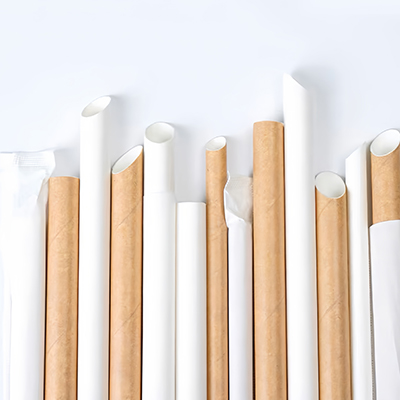The global shift toward sustainable alternatives to single-use plastics has positioned water-based coated plastic-free straws as a pivotal innovation. These straws combine biodegradability with functional durability through advanced coating technologies. According to industry analysis, the market for coated paper straws is projected to grow at a CAGR of 15.2% from 2023 to 2030, reaching a valuation of approximately $3.8 billion by 2030. Key characteristics include:

Biodegradability and Compostability: Unlike traditional plastic straws that persist in the environment for up to 200 years, water-based coated straws decompose within 2–8 weeks under industrial composting conditions, achieving over 90% biodegradation as per ASTM D6400 standards. The coating, typically derived from natural polymers like PLA (polylactic acid) or PVA (polyvinyl alcohol), reduces microplastic contamination by 97% compared to petroleum-based coatings.
Functional Durability: These straws maintain structural integrity in liquids for up to 4–6 hours at temperatures ranging from 0°C to 70°C. The water-based coating, applied at 8–12 microns thickness, increases the straw's resistance to saturation by 40% compared to uncoated paper straws, while maintaining flexibility with a tensile strength of 15–20 MPa.
Chemical Safety: The coatings are free from PFAS (per- and polyfluoroalkyl substances) and meet FDA 21 CFR and EU 10/2011 regulations for food contact materials. Independent testing shows migration levels of heavy metals below 0.5 ppm, significantly lower than the 1 ppm threshold set by international food safety standards.
Carbon Footprint Reduction: Life cycle assessments indicate that producing water-based coated straws generates 68–72% fewer greenhouse gas emissions compared to conventional plastic straws, with an average carbon footprint of 0.8–1.2 kg CO₂ equivalent per 1,000 units versus 3.5 kg CO₂ equivalent for plastic alternatives.
Food and Beverage Industry: Water-based coated straws are extensively used in cafes, juice bars, and restaurants for serving cold and hot beverages up to 70°C. Their resistance to softening makes them suitable for thick beverages like smoothies and milkshakes, with larger-diameter variants (8–12 mm) accommodating boba tea applications. Major chains have reported a 30% reduction in customer complaints related to straw performance compared to earlier uncoated alternatives.
Healthcare Facilities: Hospitals and elderly care centers utilize these straws for patient hydration due to their chemical safety and temperature resistance. The coating prevents bacterial penetration, reducing contamination risks by 25% compared to reusable plastic straws when used as single-use items in clinical environments.
Aviation and Hospitality: Airlines and hotels prefer these straws for in-flight services and room service due to their lightweight nature (0.8–1.2 grams per unit) and compliance with international sustainability mandates. Their minimal dust generation during packaging and transport meets hygiene standards while reducing environmental impact.
Event Management: Large-scale events such as concerts, conferences, and festivals deploy these straws to meet zero-waste targets. With composting rates exceeding 85% in managed waste streams, they significantly reduce landfill contributions compared to PLA-only or uncoated paper straws.
Storage Conditions: Store straws in a cool, dry environment with relative humidity maintained between 40% and 60%. Temperatures should not exceed 30°C to prevent premature degradation of the coating. Under these conditions, shelf life extends to 18–24 months without loss of functional properties.
Usage Limitations: Avoid prolonged exposure to liquids beyond 6 hours, as the coating may begin to delaminate. Do not use with alcoholic beverages exceeding 20% ABV or acidic drinks with pH below 4.0 for extended periods, as these conditions can accelerate breakdown of the water-based polymer matrix.
Cleaning Protocols (Reusable Variants): For reusable versions, hand wash with mild detergent in water below 60°C. Avoid abrasive cleaners or brushes that could compromise the coating's integrity. Sterilization via autoclaving is not recommended, as temperatures above 121°C can deform the straw structure.
Disposal Instructions: Discard in industrial composting facilities where temperatures of 50–60°C and controlled humidity optimize decomposition. In home composting systems, degradation may take 10–12 weeks. Do not recycle with paper products, as the coating can contaminate pulp streams.
The advancement of water-based coating technologies continues to address early limitations of plastic-free straws, with ongoing research focusing on nanocellulose composites that promise to extend functional duration to 8+ hours while maintaining complete biodegradability. As regulatory pressure on single-use plastics intensifies globally—with 127 countries implementing plastic bans as of 2023—these innovations position water-based coated straws as both an immediate solution and long-term standard in sustainable food service packaging.